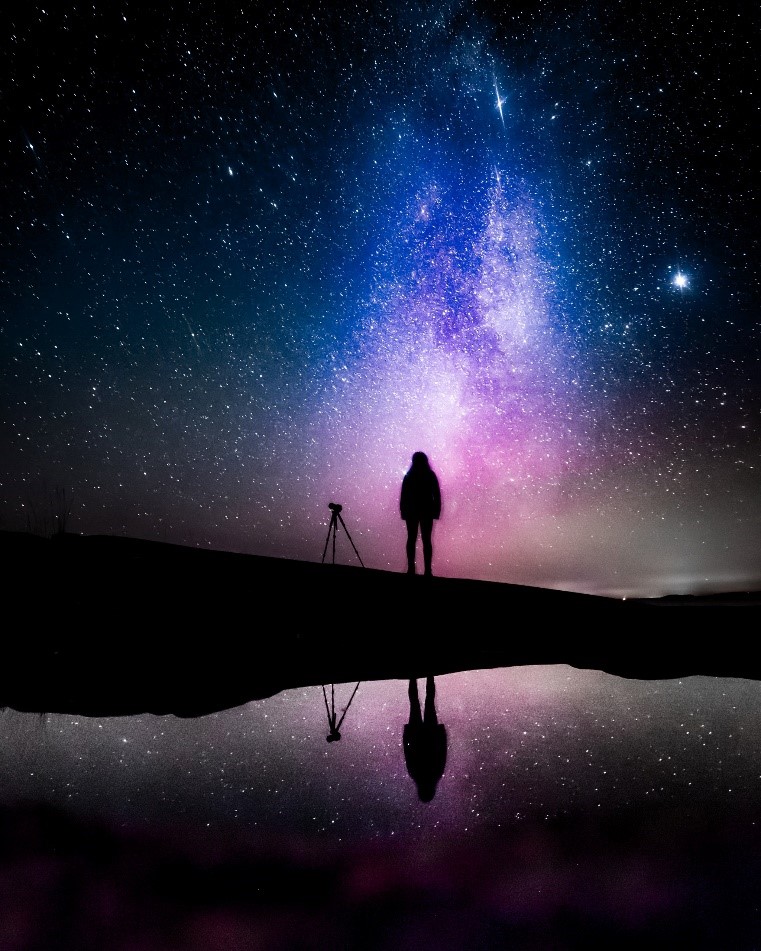Erik Davis Harp of Arizona is just like anyone with a deep love of photographing space. He has dreamed of capturing the night sky in its full beauty and glory. Unfortunately, though, most cameras struggle to pick up the small flecks of light emitted by stars and planets. To create the perfect nighttime photo, Erik Davis Harp discusses how photographers use special techniques paired with light-sensitive equipment to capture the mysteries of the universe.
Astrophotography is a unique field of photography that requires specialized knowledge and the right tools. Erik Davis Harp takes a look at some of the equipment it takes to get started with this hobby and discuss how you can create lifelike shots of the night sky without years of training.
Equipment You’ll Need to Capture the Night Sky
Before you attempt to take a picture of the stars, you’ll need special equipment to help stabilize your camera and pick up the small amount of light emitted from the stars, planets, and moon. Erik Davis Harp gives a brief guide to the tools you’ll need:
- Telescopes – Using a telescope can help gather light and track celestial objects. The larger the telescope’s aperture, the more light it can gather and the brighter your images will be. As Erik Davis Harp explains, a steady telescope with star-tracking software can also help keep the night sky in focus, even as the stars move.
- A DSLR camera – A digital single-lens reflex (DSLR) camera is the best type of camera for astrophotography because it allows you to change lenses. Erik D. Harp explains why this is important because you’ll need to use a lens with a wide field of view to capture as much of the night sky as possible. You can then switch to a lens with a longer focal length to zoom in on a particular object, like the moon or a planet.
- Light-sensitive camera lenses – As Erik D. Harp mentions, you’ll need a camera lens with a wide field of view to capture as much of the night sky as possible. The lens’ focal length is expressed in millimeters (mm), and a shorter focal length means a wider field of view. For example, a 50mm lens has a narrower field of view than a 20mm lens.
- A tripod – A tripod is a must-have for astrophotography because it stabilizes the camera and prevents image blur. Erik Davis Harp says when taking long-exposure shots, even the slightest movement can cause the image to become blurry. A tripod ensures that your camera stays perfectly still while you’re taking the photo.
- An intervalometer – An intervalometer is a device that allows you to take a series of photos at regular intervals. This is helpful for two reasons says Erik D. Harp. First, it allows you to take a series of long-exposure shots without having to manually press the shutter button each time. Second, it allows you to take a series of photos that you can later combine into a time-lapse video.
Although this equipment can get expensive, it’s an absolute must if you want to capture truly lifelike images of space and the night sky.
 How to Set Up Your Camera for Astrophotography
How to Set Up Your Camera for Astrophotography
Now that you have all the necessary equipment, it’s time to learn how to set up your camera for astrophotography. First, you need to attach the camera to the telescope. Erik Davis Harp explains that most telescopes have a special adapter that allows you to do this. Once the camera is attached, point the telescope at the night sky and use the viewfinder to find an interesting object to photograph.
Then, switch the camera to manual mode and
set the shutter speed to 30 seconds. This will allow enough light to enter the camera to create a bright image. If the image is too bright, you can try a shorter shutter speed, like 15 seconds. If the image is too dark, you can try a longer shutter speed, around 60 seconds says Erik Davis Harp.
Next, set the ISO to a high number, such as 3200. This will make the camera more sensitive to light, which is necessary for astrophotography. Finally, Erik Davis Harp says to set the aperture to the widest setting possible. This will allow more light to enter and will help to capture a clearer image. Once you have the shutter speed, ISO, and aperture set, press the shutter button to take the photo.
If you’re planning to take long-exposure shots, leave the camera in place and make sure that nothing bumps or disrupts the image. Even the slightest of movements will ruin the final shot and you’ll have to start over.
Final Thoughts
Erik D. Harp explains that astrophotography is a challenging but rewarding hobby that anyone can enjoy. With the right equipment and some practice, you can take stunning photos of the night sky that will be cherished for years to come. Just be sure to invest in quality tools and take the time to learn the proper method.
